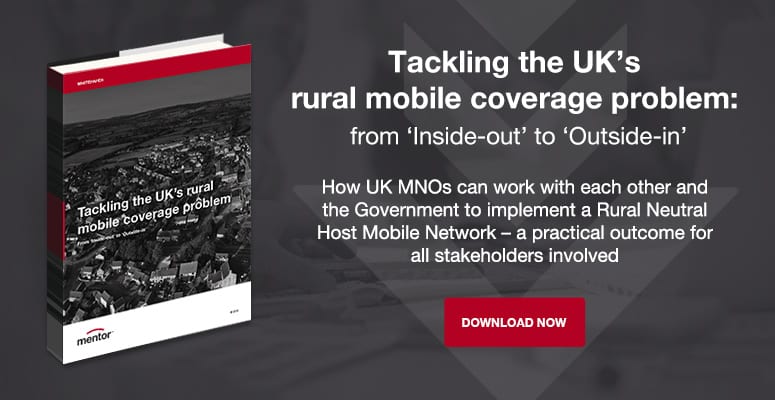Full Fibre versus Gigabit Broadband – What happened to Boris’ big idea?
A few months back Boris promised Full Fibre for everyone. But, at some point in the last few weeks, the language changed. Full Fibre was swapped for Gigabit Broadband. A significant change of policy almost certainly promoted by intense industry lobbying.
The Government seems to have returned to a more traditional “technology neutral” stance. Not backing any one technology, but rather looking for what each can deliver.
And earlier this week, the Queen announced in Parliament that the government would ‘bring forward’ a National Infrastructure Strategy. We are fabulous at crafting high-flown strategies – but one wonders if ‘delivery’ can even get close to the promise – especially this time around.
The job of giving everyone Full Fibre is very different to the job of giving everyone Gigabit Broadband. Gigabit Broadband allows us to use the right horse for the right course.
The lingo switch suggests this is the final nail in the DSL coffin because BT’s fibre to the cabinet technology can’t deliver Gigabit broadband.
In contrast, Virgin Media’s Hybrid Fibre platform could be a big winner. Once upgraded it can deliver Gigabit services – and continue to provide more modest speed services to most customers.
Faced with the threat of future Virgin Media Gigabit Broadband and Alt.Net Marketing campaigns, from the leading Alt.nets, BT will be forced to accelerate its own Full Fibre rollout – or face losing customers.
Super-fast and, even ultra-fast broadband, can be delivered in a number of different ways.
Route 1 is fibre to the cabinet (FTTC), where the ‘final mile’ is delivered over BT’s copper phone lines. Typically, this achieves 50-70 Mb/s depending on the length of the copper.
BT is rolling out the latest G. Fast technology to 2.7M homes. This offers c300Mb/s to customers – but only on very short copper runs.
Route 2 is Fibre to the premises (FTTP). For many people this is the gold standard. A brand new, 21st century fibre optic infrastructure, connecting homes and businesses directly to the information super-highway – and delivering potentially unlimited speeds.
Broadly there are two ways to achieve this.
BT’s approach pushes fibre further towards the customers from their already extensive Fibre-to-the-Cabinet network. This involves removing old copper wires and replacing them with new fibre cables at the very edge of the network.
This is a very complex programme for two reasons. First, the age and scale of the infrastructure and, second, the need to migrate customers from copper to fibre. BT has also got to make space in the ducts and, crucially, avoid the costs of dual-running copper and fibre.
The Alt.net approach builds an entirely new Full Fibre infrastructure in their own new ducts dug into the streets. It doesn’t depend on BT and its ageing local network, but replicating that local network – in new ducts – is a very big job.
Some Alt.nets use a hybrid approach where they use BT’s Ducts to install their own fibre cables. The jury is still out on whether this is the best, or the worst, of both worlds.
MNOs use mobile – or wireless technology – to deliver high speed broadband. It’s perfectly feasible to deliver Gigabit speeds using 5G, provided you can assemble enough 5G spectrum.
The trouble is it can’t provide the capacity density in urban or dense urban areas to provide residential services. In truth, it’s a bit of a waste when the same spectrum could be used to provide more valuable Mobile broadband services in the same geography.
But – it’s our favoured technology for the rural fringe. Here, usage density is very low, and it makes much more sense to provide desperately needed mobile and broadband services with a single infrastructure, rather than four.
Virgin Media uses the hybrid fibre coax platform – first installed for cable TV – and provides service to over 50% of the population. DOCSIS 3 is the technical standard used by the cable industry – and it now has the capability to offer services over 1Gb/s speeds.
Upgrading to higher speeds is focused on upgrading the technology in the Virgin Media street cabinets. Crucially, we suspect they don’t need to change the cables connecting their customer to the network.
And this makes it a substantially easier programme to execute than the one that BT or the Alt.nets face.
So, the Gigabit Broadband race is ‘on’ with some new runners and riders.
As always, the result is going to be about programme execution. Specifically:
- Can Virgin manage their upgrade programme fast enough to exploit a Gigabit marketing message – before BT and the Alt.nets?
- Can BT accelerate its Full Fibre programme and persuade government to allow ‘forced’ migration from copper?
- Can the leading Alt.nets take advantage of their flying start in key geographies and make the most of their Full Fibre advantage?
- Will the in-built technical advantages of Full Fibre over Hybrid Fibre Coax turn into ‘cashable’ benefits?
- Who will pick up the challenge to provide rural Gigabit broadband – and solve rural Mobile and Broadband debacle?
Execution is not rocket science but it is a neglected management discipline.
Managers can easily get away with ignoring fundamental execution disciplines for weeks, or months, without any obvious sign of problems.
Why?
Because ‘optimism-bias’ is rampant on business-critical programmes.
The cornerstones of execution discipline are simple – but not easy. They’re so simple, they’re easy not to do.
And many companies don’t.
If this is normal practice in your business, a programme flame-out is never far away.
If you are troubled by the prospect of your programme losing its footing, give me a call.


